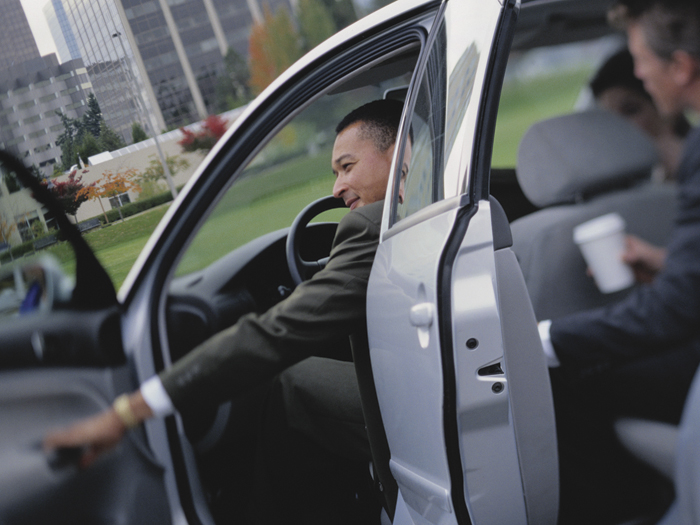Digital Jitneys
Growing Pains for Rideshare Services

In the long run, ridesharing software services will be part of city transport systems around the country, and the new business they foster will grow markets for commercial lines of insurance. But those eventualities are far down the road.
Right now, ridesharing businesses are stuck in a jam of pending legislation and even, litigation.
When services like Uber and Lyft made their debuts, it seemed like such as simple premise: a virtual clearinghouse of drivers with an empty seat in the car matched with potential passengers willing to toss them a few bucks towards gas.
From the start, the services were adamant that they were software companies, not taxi operators, and that drivers were not even independent contractors, but private citizens willing to give a stranger a lift.
Regulators are starting to see things differently, and the courts will soon weigh in as well. Bills specifying obligatory insurance types and amounts, as well as assigning liability in case of loss, are now pending in at least five states — Arizona, Colorado, Georgia, Maryland and Oklahoma — as well as in municipalities such as Chicago, Seattle, Minneapolis, Milwaukee, Pittsburgh and Dallas.
California was the first state to enact rules governing ridesharing operations, and in a tragic irony, San Francisco is the venue for one of the first lawsuits involving a fatality. On New Year’s Eve, a driver who was registered with Uber, but was not working a call at the time, accidentally killed a young pedestrian at a notorious intersection in downtown San Francisco. The driver was arrested and his case is pending, but the stricken family is also suing Uber.
The first complication, said property and casualty underwriters and brokers, is that private automobile insurance specifically excludes use of the vehicle for hire.
Covering the Gap
In response to the tragic accident, Uber recently announced that it would expand its insurance coverage.
Previously, it required drivers to have $1 million of commercial insurance to cover driver liability from the time they accept a trip request through their app until completion of the ride. Uber also included $1 million coverage for uninsured/underinsured motorists, and contingent comprehensive and collision insurance, up to $50,000 per incident.
Although the company noted that “the vast majority of personal insurance policies” would cover the driver when they have the app open and are available, but have not yet received a transportation request, Uber decided to “cover any potential ‘insurance gap’ by providing contingent coverage of $50,000 for bodily injury for an individual; a total of $100,000 for bodily injury for an incident; and $25,000 for property damage for an incident.
“Uber is taking this step to eliminate any ambiguity while the insurance industry and state governments update policies and regulations for the new world of ridesharing transportation,” the company announced.
 Lyft also followed suit, announcing it would provide “backstop coverage” to drivers when their app is open but the drivers are not yet providing rides. That protection is to be rolled out over time, state by state, according to reports.
Lyft also followed suit, announcing it would provide “backstop coverage” to drivers when their app is open but the drivers are not yet providing rides. That protection is to be rolled out over time, state by state, according to reports.
Neither company responded to requests for comment.
“Ridesharing is going on all over the country,” said Robert Passmore, senior director of personal lines policy at the Property Casualty Insurers Association of America. “The California Public Utilities Commission [CPUC] was the first, and so far the only state, to attempt to regulate the business.
“Uber and Lyft and the other rideshare services have always stressed that they are not transportation companies,” he said, “but so far that argument has not convinced anyone.”
Last autumn, the CPUC ruled that rideshare services were indeed transportation companies, but the companies are appealing that decision.
“In our industry, when someone hears words like ‘excess’ and ‘contingent’ coverage, we know that there has to be primary coverage that specifically addresses the activity,” said Passmore.
In the case of automobile coverage just the opposite is true, with personal policies specifically excluding rides for hire.
Passmore said his association and P&C underwriters in general do not oppose rideshare services.
“The reason we are getting involved in this issue is that it does present opportunities for carriers. There needs to be coverage intended specifically to address the risk in question.”
He also noted that many smaller cities are underserved by taxi and radio-car services, so that once the insurance and liability questions are resolved, rideshare services will be a boon for those local economies.
Indeed, he believes that the software firms and underwriters can make it a common cause. “The software companies have a great deal of data about how and where and why people drive and ride. That data is of great interest to the underwriting community,” Passmore said.
Expanding Exclusions
Broadening the focus, Stephen Hackenburg, chief broking officer for national casualty at Aon, said: “We are all working on contingent exposures. The industry is getting smarter, expanding exclusions of negligent supervision, situations where there can be failure of oversight or failure of due diligence. The ISO 2013 general liability policies had expanded exclusions of negligent supervision.”
As an example, Hackenburg offered a scenario: A vacationing family wants to take an off-road tour, and the hotel or cruise ship concierge books them or refers them to one. If something goes wrong, the hotel or cruise line can try to claim that the tour operator is a separate operation.
“But,” he said, “any enterprising lawyer could make a case out of what did the hotel or cruise line do to verify the safety of the tour operator.”
One possible partial solution, Hackenburg said, is the kind of blanket liability policy that some importers are starting to buy to cover their international suppliers.
“If you are a toy company, and something you imported from China is found to have lead in it, it will be very difficult to try to go after some nebulous manufacturer in China. Instead you get a foreign-supplier liability policy and schedule all your sources. You can either just eat the cost, or try to get them to pay for some or all of it.”
He said the same would apply to a large company doing business with small firms that are often undercapitalized. Cruise lines make significant profits from booking land-side tours, but if there is a problem, the vacationers are going to sue the cruise line, not the guy with the jeep.
Hackenburg also noted that there are other options, including creating an affinity program within a captive that small vendors and suppliers can buy into. “We work closely with our clients on contingent exposures,” he said. “There are actually lots of tools available. You just have to have those discussions.”
He said that online businesses from ridesharing to tour booking to international supply chains are bringing more disparate interests together. That creates many new business opportunities, but also a whole new web of liabilities. Far better to make some decisions in advance than when the car is in the ditch.










